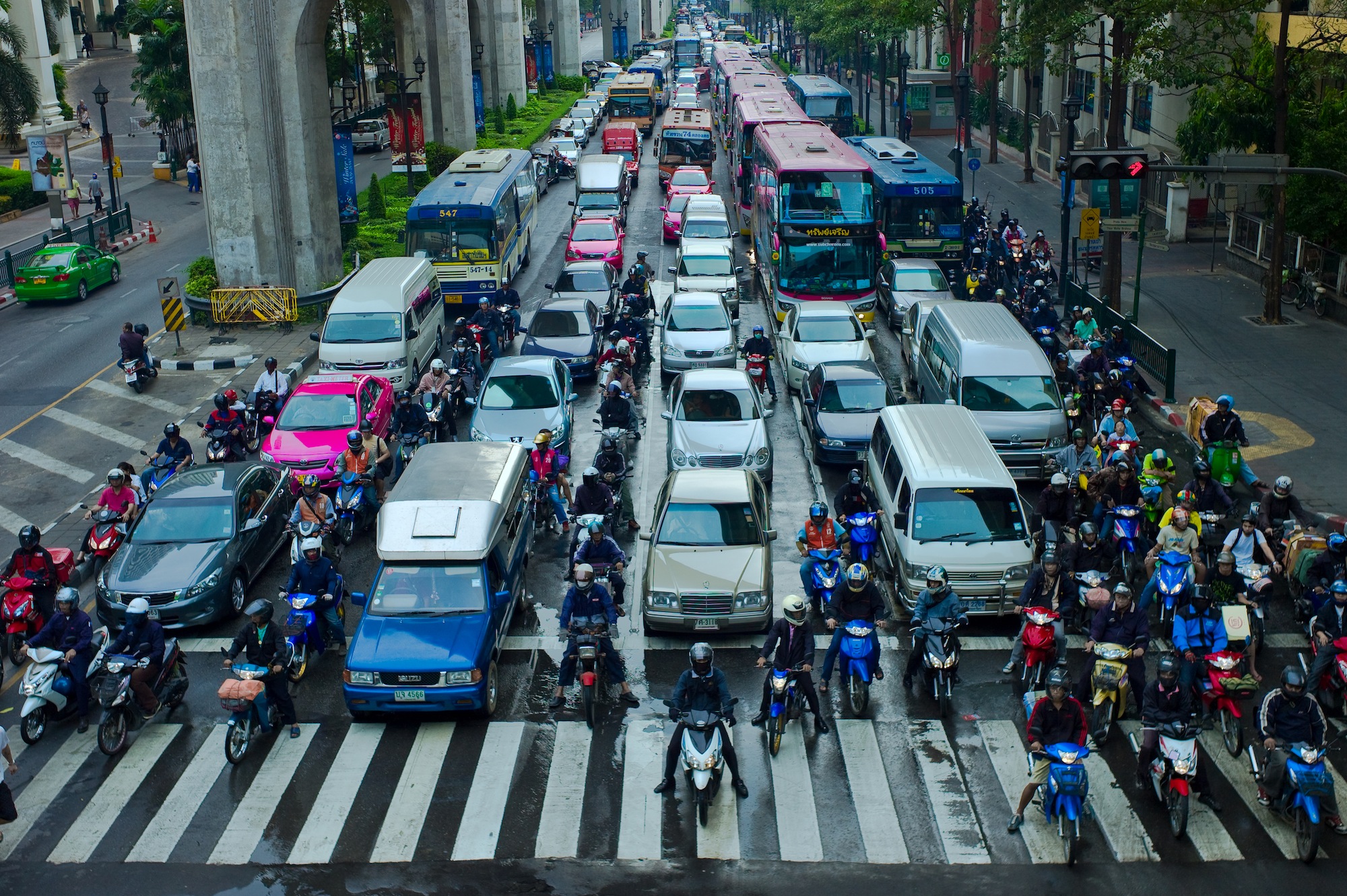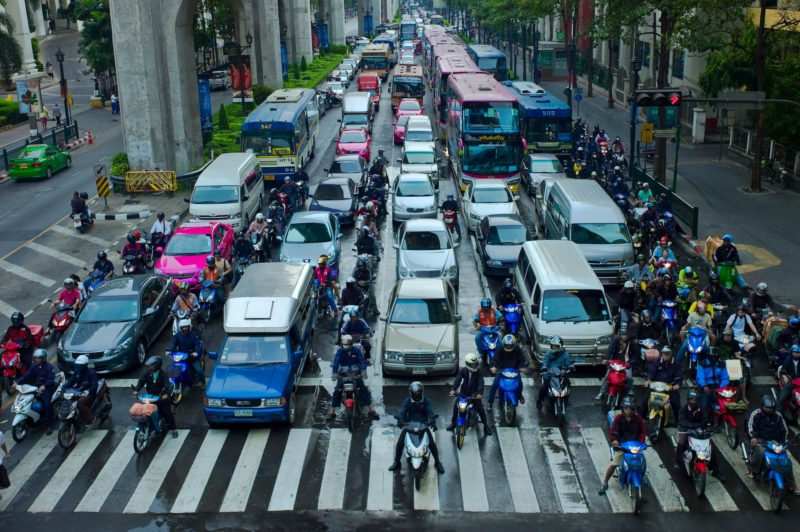
We were almost expiring from the heat as we waited in the long, stationary queues of traffic, so I asked our American guide if it was legal to filter or lane-split.
“Well, you can if you want to … but all these guys (pointing at the drivers) have guns,” he replied.
In some countries, lane-splitting or filtering is illegal. But even where it’s legal, jealous car drivers who think riders are “jumping the queue” can get hostile.
What is needed is an education program to tell drivers and the authorities – where it is illegal – that the practice actually helps them and clears up congestion.
That is exactly what is being done with a current TV ad made and sponsored by the Australian Motorcycle Council and a law company. Click here to watch the ad.
Before we go any further, there is a difference between lane-splitting and filtering. The former involves sharing a lane with another moving vehicle. Filtering is simply going up between lanes of stopped traffic.
It is this difference that makes patrolling the “offence” difficult for police. Then it can become a matter of judgment by the police of whether the traffic was moving or whether it is dangerous.
Despite what our American minder said in Chicago, it’s not legal anywhere in the USA except California where it used to be tolerated unless you were travelling recklessly. However, new rules stress that motorcyclists can only split lanes as long as they don’t exceed 10mph faster than surrounding traffic which must be going less than 30mph.
In Europe and Japan, it’s no only legal, but de rigueur. The cities would fail to function if it didn’t happen. In Asia … well, I’ve seen five cars side by side in three marked lanes, so clearly there is no concern about bikes lane-splitting or filtering.
In Australia, there is actually no law that specifically outlines this practice, however it can be covered under failure to stay in your lane, passing on the left or simply dangerous operation of a vehicle.
The lack of a specific law encouraged a bunch of misguided “safety officers” to pursue an Australia-wide infringement a few years ago. It was met with some resistance and antipathy from various states and a lot of hostility from bikers.
However, it still remains that police can book you for it.
I was once booked for failure to stay in my lane when I slipped up the middle of stationary traffic on the Western Freeway in Brisbane.
It struck me as strange that the traffic was so slow at that time of the day, but it soon became evident that the traffic snarl was caused by police conducting a crackdown on filtering/splitting. So, they basically caused the condition that provoked my behaviour. It’s a form of entrapment but since we don’t have laws against that in Australia, we’ll let that ride.
The fine was $75 and no demerit points so I wore it. However, those who rode up the left side of the traffic on the wide and safe verge were slugged with a $150 fine and one demerit point penalty. makes no sense since it is the same “offence” as mine.
However, who was I harming? Myself? Riding slowly up between lines of stationary traffic is not dangerous.
It actually allows cars to shuffle forward without a bike being in their way, taking up a car space.
It’s so invaluable to easing traffic congestion that in England a few years ago they had a campaign to encourage drivers to “Leave a gap”.
Is it safe? The ad says it’s six times safer.
Well, since many accidents involving bikes are rear-enders, this practice avoids that.
Also, many accidents are caused by drivers who did not see the biker. Riding up through lanes of traffic makes riders much more visible.
There are still concerns about drivers quickly changing lanes without indicating or drivers in parked cars suddenly opening doors, so it pays to be attentive … but doesn’t all road use?
Ad supports lane filtering


